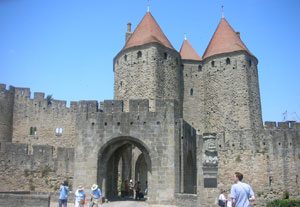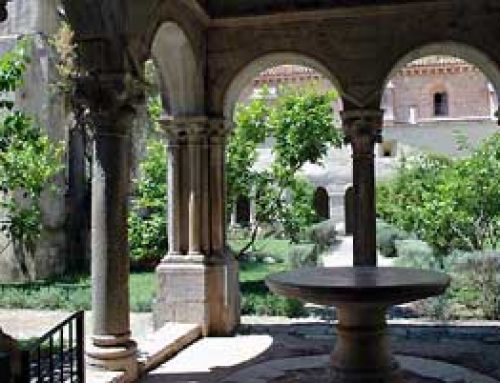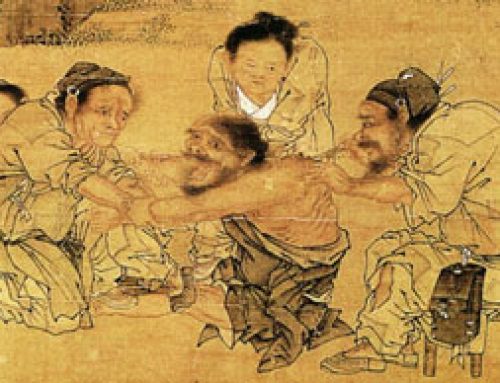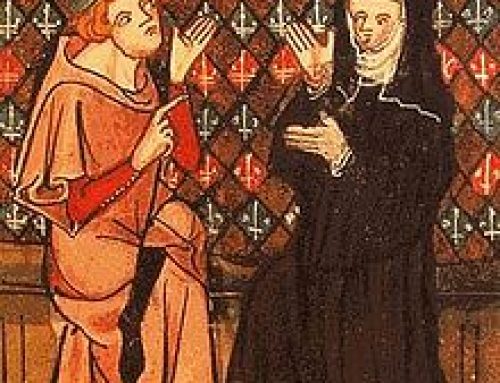
Outer walls of Caen castle, Normandy, France (about 1050 AD)
From Roman castra to medieval castles
Rich Romans didn’t live in castles. They lived in villas. But Roman soldiers lived in military forts called castra, and that is where we get the word castle.
The Roman army
Roman villas
Medieval architecture
All our medieval Europe articles
After the collapse of the Roman Empire, there was a lot of trouble with pirates and bandits and invasions. Rich people began to build their villas more like forts, for safety, or they moved into old Roman forts. They called these forts castles.
Getting richer, building new castles

The White Tower of the Tower of London (about 1100 AD)
By the 1000s AD, though, these old Roman forts were falling apart. And some rulers had enough money to build new castles. In the 1000s and 1100s, rulers and rich people built castles from one end of the old Roman Empire to the other. There were castles all over the place, from Egypt to England.
Fatimid Caliphate architecture
The Tower of London
What is a castle keep?
At first, most castles had just one central tower, called the keep. A keep usually had two or three floors, with one big room on each floor. There was one big chimney running up the side, so each room had one giant fireplace to heat it.

Carcassonne (1060s to 1240s AD)
Who invented chimneys?
The castle of Vincennes
The Conciergerie in Paris
Carcassonne
The castle of the kings of France at Vincennes is a good example of this kind of castle. Other examples are the Tower of London, or the Conciergerie in Paris.
What are moats and drawbridges?

Saladin’s castle in Cairo, where Maimonides worked (about 1150 AD)
To make it easier to defend these castles, they had only very small slits for windows, and very thick walls. Around the keep there was often a deep, wide moat full of water, and you could only cross the moat by going over a drawbridge. To see a good example of an early castle with a moat, check out William the Conqueror’s castle at Caen.
William’s castle at Caen
Castles and power
Castles weren’t only to defend people against enemies coming from another place. Rich, powerful families also built castles so they could have somewhere safe to live where the poor people couldn’t revolt and kill them. Rulers used castles as a place to keep tax money so nobody could steal the gold and silver. They stored food inside castles so they could sell or give it away later. They kept weapons safe there so people leading revolts couldn’t get swords or spears. Castles could also protect traders, so their stuff wouldn’t get stolen when they came to sell it.
Medieval weapons and war
History of taxes
Medieval food
Medieval economy
Later medieval castles

Conciergerie: the king’s castle in Paris (parts of it from the 1300 AD)
Later on, the countryside got safer. The kings were stronger and could control the bandits better. So rich people began to be less worried about safety and more interested in comfort in their houses. Powerful rulers wanted to impress people with how rich they were, in their beautiful castles.
Who invented glass windows?
Castle architects started to add on rooms around the keep, and to make bigger windows with glass in them, and they put permanent stone bridges over the moats instead of drawbridges. Both Carcassonne and the Tower of London have later additions like this.
Gunpowder and the end of castles

Castle of Vincennes, Paris (1300s AD)
Then in the 1200s, people in Europe learned about gunpowder from China, and by the 1400s they built cannons that could blow up even thick castle walls, so castles became pointless.
Gunpowder and cannon
By the end of the Middle Ages, even the strongest rulers weren’t really living in castles anymore.




